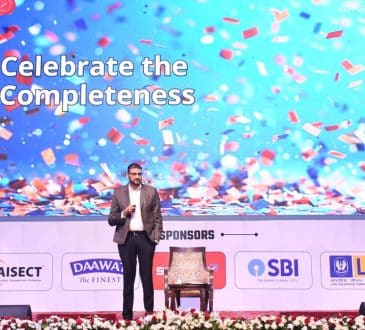The Power of Continuous Learning: A Strategic Approach to Employee Retention

High employee turnover rates have an enormous, widespread economic impact. Companies spend excessive time, effort, and money on recruiting and training new employees, only to see them move on, fail to meet expectations, or perform well below their potential. Low morale, the loss of institutional knowledge and inexperienced employees result in reduced productivity. A recent study by Gallup estimates the worldwide cost of this familiar cycle to be more than $300 billion a year.
These challenges aren’t new. But they are more urgent than ever in 2024, as companies struggle to keep up with steadily rising attrition rates.
Imagine a company’s workforce as a bucket. The company is continually adding new workers into the bucket to replace those who retire, move to another company, or simply leave the workforce. Unfortunately, the employment bucket many companies are trying to keep full in 2024 has a gaping hole in the bottom, created by the unprecedented rates at which workers are leaving the workforce — outpacing the rate at which they can be replaced because there aren’t enough new workers to keep up with the losses. In a nutshell, the talent bucket is leaking faster than companies can add to it.
At current rates, many business leaders could soon be staring at an empty bucket. Their companies, and the economy overall, may face serious consequences if they can’t find effective solutions to shore up the workforce and successfully plug the big hole at the bottom of the talent bucket.
Training for opportunity
Forward-thinking companies turn these challenges into opportunities. They invest in solutions that effectively ramp new workers and open advancement opportunities for existing employees. A commitment to training and a culture of continuous learning can be a powerful competitive advantage as employee retention remains an important factor in today’s marketplaces.
Training is always a critical component of any successful business strategy. A continuous commitment to learning seamlessly prepares new workers for the job while ensuring existing employees keep their skills up to date and have opportunities for advancement. A frictionless cycle of effective training helps employers keep their workforce bucket in the proper balance.
With today’s turbulent workforce conditions, training has significant benefits beyond the simple acquisition of skills necessary for day-to-day operations. In addition, a culture and commitment based on holistic, comprehensive training:
- Helps employees develop confidence and build satisfaction and loyalty, which can help enhance both productivity and retention.
- Provides employees with clear paths for personal development and career advancement.
- Shows team members they matter by demonstrating the company’s investment in customized training that meets their specific needs and goals.
Overcoming challenges of traditional training
There are numerous challenges to traditional training methods. Employers routinely report a lack of time to train, confusion about the proper training methods and platforms, and a perceived lack of meaningful results. Many of them are frustrated by time-consuming methods such as classroom training and one-on-one mentoring.
Traditional learning may provide valuable foundational knowledge, but it doesn’t align with today’s workflows and often doesn’t engage younger employees. To remain competitive, today’s employers need effective solutions that quickly train new employees and continually upskill their existing teams. In the fast-paced, rapidly evolving business environment, modern training can support not only a more effective and loyal team but also position companies to maximize every opportunity and differentiate themselves from the competition, regardless of the industry.
The Changing Landscape of Employee Expectations
Some of the retention instability across industries is a result of rapidly changing expectations about workplace culture and opportunities for advancement.
Today’s workers desire an investment in programs that offer them pathways to learn new skills and move up the career ladder. They value visible, tangible career support. They want to continually upskill and take on new responsibilities. They see an employer’s investment in them and their careers as a basic requirement, not a bonus. According to a recent survey, 88% of younger workers said they would take advantage of skills training if their employers offered it.
Structured training programs are critical in this environment of evolving expectations. Simply implementing old-fashioned one-way training, where team members absorb lessons and regurgitate facts is not enough.
Current generations have grown up learning with technology — specifically computers, tablets, smartphones, and interactive platforms. They are digital natives. Technology and the internet are simply facts of life, not novel innovations. Today’s workers look for engaging, interactive, flexible learning that allows them to practice their new skills in a safe environment. For skilled hands-on workers, immersive simulation training is essential.
The Impact of Continuous Learning on Employee Engagement
Employers are often reluctant to invest time and resources in training because they fear team members will take their new skills somewhere else. On the contrary, employees recognize that an investment in training is an investment in them. It demonstrates their value to the company. The result is continuity and loyalty. Team members feel appreciated, so they’re less likely to leave.
As they develop skills, they can advance within the company, reducing hiring and onboarding expenses. The company’s investment in its team and the resulting lack of turnover help potential talent identify the company as a workplace of choice.
There is also an impact to organizations if they don’t incorporate a culture of continuous learning. Organizations that fail to provide sufficient training and other resources for their employees will continue to experience attrition and keep spinning the hamster wheel of recruiting, hiring, onboarding, recruiting, hiring, onboarding.
Building a Learning Culture
Organizations must fully commit to training and learning as a foundation for success to fully realize their potential. Leadership must be passionate about learning and advancement. Their visible excitement reinforces the positive outcomes associated with training – engagement, productivity, retention and morale.
To be effective, training must be a practiced priority. Employees must be aware that supervisors and leaders value the well-being of team members. Set aside time for all team members to train. Don’t expect them to learn on their own time and don’t make them choose between work and training.
Ultimately, leaders must remember that training is an ongoing process. Whether you’re implementing the company’s first dedicated training program or enhancing an outdated one, results will take time and commitment. The full benefits won’t be visible overnight. Success comes after a sustained, consistent effort. Leadership expects their team to be autonomous and excited about learning. But to be successful, a training-friendly culture must be supported, encouraged, and enforced up and down the management chain.
Personalized Learning Paths and Employee Empowerment
Today’s workers are more diverse and connected than any previous generation. They’re used to accessing information on demand in the ways that suit them best and match their learning style.
Members of Generation Z, for example, prefer to work independently, even within a group. With the right learning technology, students train at their own pace, individually. This enables students who excel to move ahead while those who need extra guidance can spend as much time as they need to review information.
Training programs and platforms that allow users to select the method of engagement that works best for them stand out with today’s employees. Custom training opportunities can be personalized to meet each employee at their skill level and match their learning style. Training schedules can be threaded throughout a company’s workflow. Learning from experts then simply becomes part of the job.
Because different employees bring different skill sets to the table, the most efficient training allows managers to customize pathways for each learner. With curated learning paths, team members learn the right skills, in the right order. In addition, managers can assess and address skills gaps.
A program with broad offerings creates a one-stop shop that can offer greater value and increased efficiency. Learners can take advantage of a wide variety of courses while utilizing the same platform, enabling them to gain new skills and encouraging broad cross-training so employees can fill in and supplement the necessary workload.
Using Immersive Technology to Facilitate Continuous Learning
The demand for sophisticated digital training is only going to increase. Millennials are the largest generation represented in the American workforce. Members of Generation Z and beyond will soon supplant them as the dominant generation.
These generations are already used to tapping into video platforms as part of their education. Employers can leverage that familiarity by implementing immersive learning — an experience that puts the learner into an interactive environment without distractions.
Immersive learning creates fully simulated environments where learners interact with a real-world experience created using 360-degree images and video, scenario-based learning, virtual reality, augmented reality, AI and 3D simulations. These simulated environments replicate the live workplace, so learners can troubleshoot, repeat tasks, and practice building new skills.
Simulation training has been used for decades to great effect, but its application has been limited. Research consistently demonstrates that simulations and VR help workers improve memory and performance and reduce errors. This has driven innovative companies to develop simulation solutions for a wide range of industries, ensuring all workers and organizations have access to the same training previously reserved only for high-stakes professionals like surgeons, pilots and the military.
Incorporating technology in a teaching environment has been shown to produce significant results. Students in the skilled trades, for example, require critical thinking and analytical skills, and the ability to make quick diagnoses when troubleshooting and locating faults. Online simulations help students combine theory and practice, which is key to long-term absorption of information.
Building a skilled workforce for the future and leveraging that workforce’s full potential has proven to be an effective way for companies to fix the hole in their workforce bucket. But those efforts require a conscious commitment to training new employees and unlocking opportunities for existing ones. Training can be the most important investment a company ever makes as the urgency of employee retention continues to rise in the coming years.
Provide team members with the resources they need to succeed – and prepare them to passionately pursue peak performance by creating a culture built around training and employee opportunity. That’s how to fix the workforce bucket.
Written by Doug Donovan.
Have you read?
Revealed: Countries With the Highest (and Lowest) Suicide Rates, 2024.
Revealed: Countries with the Highest Fertility Rates (by Births Per Woman), 2024.
Revealed: Countries with the most vegetarians in the world, 2024.
Revealed: The best countries in the world for expat retirement, 2024.
Ranked: The Most and Least Developed Countries in the World, 2024.
Bring the best of the CEOWORLD magazine's global journalism to audiences in the United States and around the world. - Add CEOWORLD magazine to your Google News feed.
Follow CEOWORLD magazine headlines on: Google News, LinkedIn, Twitter, and Facebook.
Copyright 2025 The CEOWORLD magazine. All rights reserved. This material (and any extract from it) must not be copied, redistributed or placed on any website, without CEOWORLD magazine' prior written consent. For media queries, please contact: info@ceoworld.biz








